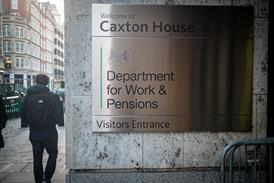The government’s much-anticipated criteria for the reform of Local Government Pension Scheme investment contains few surprises, but industry experts have raised concerns over the tight timescales for funds to prepare and implement complex proposals.
Pooling criteria
Asset pools must achieve benefits of scale
The size of the pool once fully operational
Rationale for maintaining assets outside of the pool
The type and legal structure of the collaborative vehicle
How the pool will operate
Timetable for establishing the pool
Strong governance and decision making
Maintenance of appropriate management and oversight at local level
Adequate risk management and assessment at pool level
Governance structure of the pool – including accountability of local/pool level
Reduced costs and excellent value for money
Active management must be shown to deliver value for money on a risk-adjusted, long-term basis
A full transparent assessment of investment costs and fees as at March 31 2013
A detailed forecast estimate of savings over the next 15 years
An improved capacity to invest in infrastructure
Current allocation to infrastructure
Planned allocation to infrastructure
Plans for developing capacity and capability to assess infrastructure projects
The release of the criteria for collaborative investment across the LGPS follows months of discussion and debate about how to whittle down the scheme’s 89 funds into six pools of around £25bn.
George Osborne’s announcement in the July Budget of his plans to create six “British wealth funds”, aimed at driving economies of scale and investment in infrastructure, put the wheels of reform in motion, but the publication of the specific criteria has made clear precisely what is expected of funds.
Administering authorities are required to submit an initial proposal detailing their plans to the government by February 19 2016 – just under three months’ time. They will ultimately need to pool all of their assets, with only “minimal” exemptions allowed.
At this preliminary stage funds can choose whether to submit individual or joint proposals, but by July 15 2016 a refined and completed proposal must be submitted by each fund detailing plans at both an individual and collective level.
In the criteria, the government also lays out a proposed timeline for the transfer of assets into pools.
According to analysis by consultancy PwC, pooling mechanisms could be established and operable within 18 months, with the transfer of more liquid assets timetabled to start in April 2018.
No surprises
The criteria brought “no surprises”, said Jo Holden, partner and head of local authority investment business at consultancy Mercer. She said funds need to establish which of their peers they will be pooling with and move quickly to put proposals together.
“This may seem like an obvious statement to make, but we are concerned that there continues to be too much focus on two areas,” she said.
“The first is the merits of pooling. That argument has now gone; it is happening and could be very positive if done properly. The second is the various options for pooling. These are in danger of becoming academic unless you are working on a business case or proposal for a physical group of funds.”
Steve Simkins, head of public sector pensions at consultancy KPMG, said the timescales for funds to pull together proposals are “very tough”.
In order to produce a proposal which has sufficient detail in it and to set out what exemptions an authority is going to use, the timescales are very, very tight
Steve Simkins, KPMG
“In order to produce a proposal which has sufficient detail in it and to set out what exemptions an authority is going to use, the timescales are very, very tight,” he said.
Simkins said the prevailing use of the term ‘British wealth funds’ could signal a longer-term detachment between LGPS assets and liabilities.
“It may indicate the start of a long-term plan to remove the assets effectively from the LGPS and to manage the [scheme] in a different way.”
William Bourne, director at independent advisory City Noble and chair of the local pension boards at Lancashire and the London Pensions Fund Authority, had particular reservations about governance and accountability under the criteria.
“What happens if the local authority puts money into the pool and the pool underperforms?” he said. “What does the local authority do… can they move money away? Can they sack people in the pool?”
Consulting on the rules
Consultation proposals
The latest consultation is formed of two main proposals:
The removal of a prescribed means of establishing a well-diversified portfolio and replacing it with the ‘prudent person’ approach.
The introduction of a legislative backstop or safety measure allowing the secretary of state to intervene in the investment function of administering authorities.
The government also issued a consultation yesterday on plans to revoke regulations on the management and investment of LGPS funds introduced in 2009, replacing them with a ‘prudent person’ approach.
When first introduced, the regulations sought to ensure that authorities established a diversified portfolio, placing restrictions on the proportion of assets that could be invested in different vehicles.
But the 35 per cent cap currently limiting the allocation of assets to particular types of investment vehicles will inhibit progress towards collaborative investment, respondents to the May 2014 consultation on LGPS pooling said.
Joanne Segars, chief executive of the Pensions and Lifetime Savings Association, welcomed the proposal to move towards a ‘prudent person’ approach to investment in the LGPS.
“The Association has long fought for LGPS investment rules to mirror those of trust-based pension schemes in the private sector, and we are pleased to see the government has listened.”






















